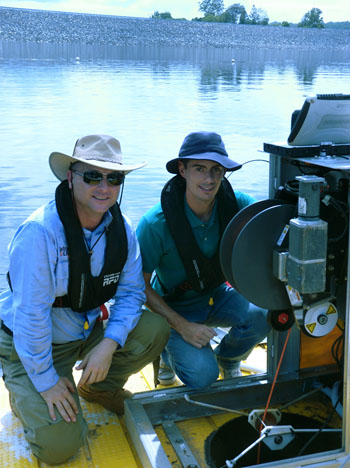In an age of growing concern surrounding shortages in the world’s water supplies, a Griffith University researcher is using historical insights to create a more sustainable, forward thinking future.
Civil engineer, Dr Edoardo Bertone is using ‘big data’ tracked from agencies such as Seqwater, the Bureau of Meteorology and Queensland’s Department of Science, Information Technology and Innovation, to develop models that will ensure more efficient, cost-effective supply to meet growing demand.
Dr Bertone has undertaken his research within Australia’s Gold Coast, using historical data, in combination with qualitative content, to develop predictive models and decision support systems to grow long term resilience of water resources.
“We are quickly transitioning towards a world where technology enables the collection of an enormous amount of data, but often it is collected without adding real value,” confirmed Dr Bertone.
“Forecasting of weather patterns and pinpointing related effects on dam storage and capacities has led to the development of a dam level prediction model which creates an environment of more informed decision making.
“Taking consideration of water usage among populations also allows a pricing optimisation model that achieves greater water conservation and resilience to climate extremes.
“Prediction and management of both water supply and water demand means a win-win for consumers and water utility providers.”
Cost reductions are complemented by more pro-active management of water treatment and water resources in general.

However in times where population growth and climate change cause increased pressure on water security, it is imperative for strategic undertakings that ensure the optimisation of water use.
“I used the example of the Little Nerang dam where my research suggests that if this water source was used more often as raw water for drinking purposes, major savings to Seqwater could be attributed through the elimination of costs associated with pumping to redirect water to a treatment plant,” added Dr Bertone.
“But the current consensus is that this source be used sparingly as a back-up reservoir in case of power outages, plus there was a general belief that because of its small storage capacity it could be over-utilised and become depleted over time.
“However there has been no consideration for historical facts that show that the dam often spills over during the wet season, and so could be better utilised during these abundant periods.
“A predictive model for water storage based on these variables, plus meteorological data can pinpoint likely activity six weeks out and therefore minimise spill and depletion risks if it were to be used as a drinking source.
Dr Bertone admits that a key-challenge is to translate science into action in order to guarantee that such models are actually used.
“We are putting a lot of effort in to creating user-friendly platforms allowing a straightforward understanding and implementation of these models.
“This includes the use of smart technologies, such as embedding the models into smartphone applications,” added Dr Bertone.
